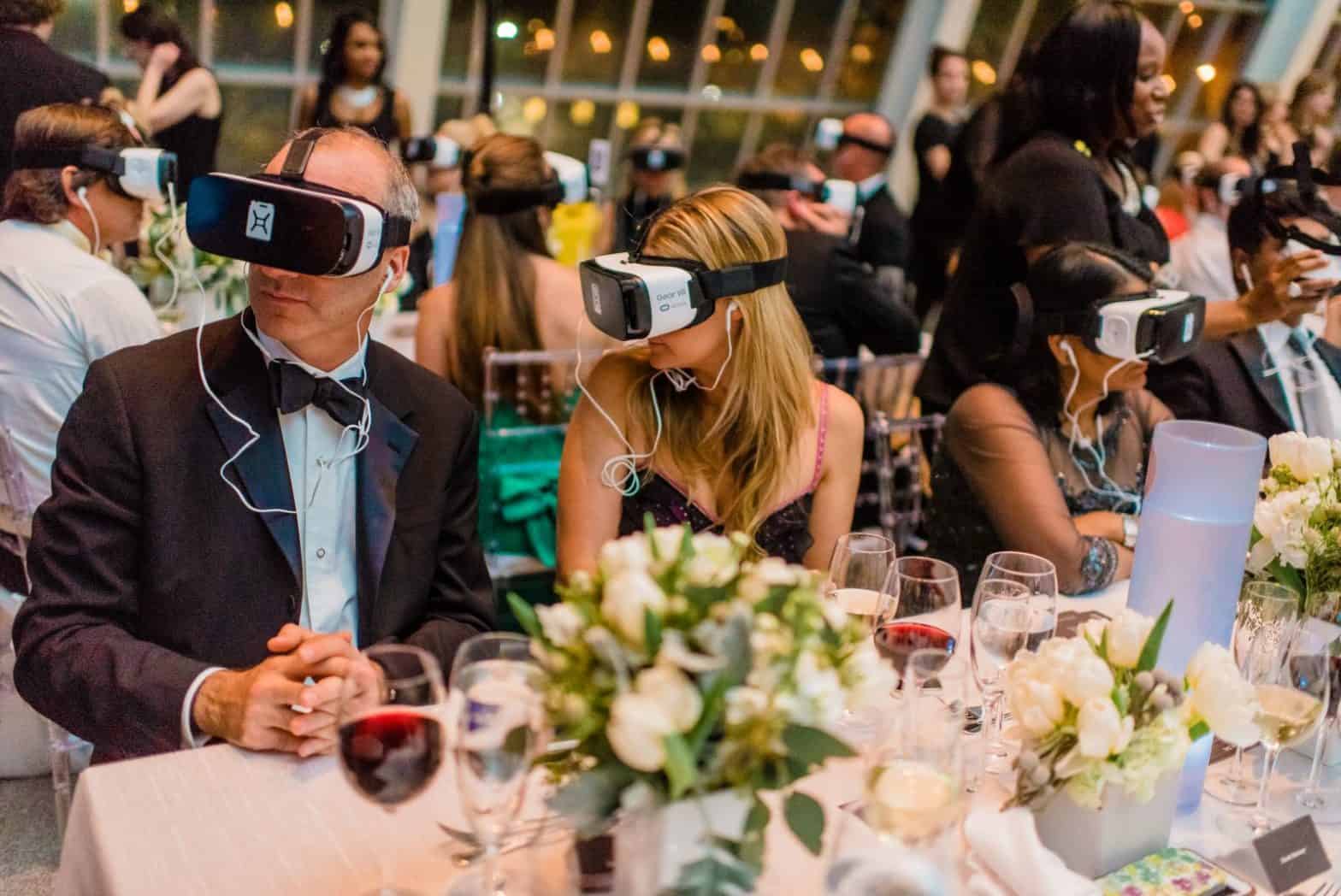Table of Contents
*This post may contain affiliate links. As an Amazon Associate we earn from qualifying purchases.
Our Brains Believe This Is Actually Happening
Virtual Reality marketing has been successfully used in changing consumer behavior by having a subject’s brain experience a situation, as if it were real.
Experiments by Jeremy Bailenson, Stanford University, have created scenarios that affected the future actions of participants in his experiments.
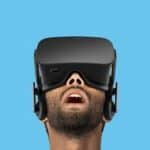
Students participated in a study that used a virtual reality experience that changed their facial features over a simulated 45 year period. This process took them for being age 20 to age 65. A follow-up study, one month later, found that these 20 year old students started saving more, in anticipation of growing old and retirement.
A more advanced study placed young men or women in a virtual reality situation of living in a cramped apartment, struggling to meet their expenses. From this bleak existence they were transformed into one where they own a nice home and are ‘happy, successful and experiencing real joy’.

The goal was to teach them to use credit wisely. After the VR experience, the young participants changed their spending habits.
Consider how an investment company could sell a young person the advantage of starting an investment account once they experienced these virtual reality adventures.
Brand equity is defined as a brand’s value in the mind of the consumer. A virtual reality video experience uses neuroscience to simulate emotions that appear real. The ability to affect emotions and tap into the unconscious mind are available in ways marketer’s never imagined.
Changing Attitudes Using Virtual Stories
When a person is immersed into a Virtual Reality story, or situation, they actually feel they are a part of it.
Our attitudes are acquired over time through our experiences. I always find it fascinating when I share an experience with a friend and they seem indifferent, until they experience the same situation.
Ultimately, they can’t wait to share their experience with me, because now they understand what I went through. We now have a shared experience.
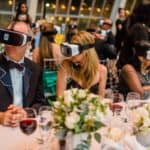
Non-profits have embraced the concept of using VR to have potential donors experience, or walk in the shoes, of the people they are seeking donations for.
The Charity:Water gathered wealthy donors to present their need for support. The donors were giving VR headsets where they experienced, through a VR video, the life of a 13 year old girl in her daily quest to gather water for her family.
The VR experience took them on a journey that culminated with the non-profit’s workers drilling a well that delivered a geyser of water into the once bleak village.
Participants, cried, cheered and donated millions. The organizers of the event started “letting people be virtually present makes all the difference. It’s hard to understand the water crisis when you just hear statistics.”
The ability to evoke empathy through a shared experience elicits a strong response as the four dimensions on the brand experience: sensory, affective, intellectual, and behavioral are fully activated.
How VR Changes Consumer Behavior
Studies have found that Virtual Reality changes behavior by tapping into emotions and the unconscious mind.
One study showed that participants who watched themselves exercise in a VR video caused them to increase their exercise time by an average of one hour per week.

Another study proved that putting woman in a virtual business setting, where they had greater importance and power than they were accustomed to, improved their confidence and future success.
The results of these studies indicate that there is a great opportunity to create virtual brand stories to elicit emotions such as joy, calm empathy and more around a brand, cause or product.
Neuroscience tools are being used to increase advertising effectiveness. The same neuroscience measurements of eye tracking, facial coding, and EEG used to measure response to advertising are even more powerful when a consumer is entranced in a Virtual Experience.
Practical Applications For Marketing and Promotion
VR has been growing in the areas of games and storytelling. Using Virtual Reality to grow your business is a process that is in early development stages.
A study by Greenlight VR of 1,300 adults released in 2016 found that ‘71 percent of consumers feel that using VR makes brands seem forward-thinking and modern. Fifty three percent of these respondents said they would be more likely to purchase from a brand that uses VR than from one that doesn’t.’
When you consider what is virtual reality marketing, the answer may take many forms, depending on your business and budget.
The cost of videos can run into the hundreds of thousands, depending on the scenario, location and production company or equipment you need.
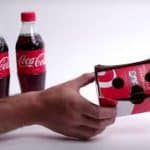
The Greenlight VR study indicates that those who stick their foot in the water of the VR world may gain a competitive edge.
Distributing branded Google Cardboard headsets, or giving customers the ability to create headsets out of your packaging like McDonald’s and Coca Cola did, brings you into the fringes of the VR world, and gets you noticed.
Augmented Reality, using a real-world environment whose elements are supplemented by computer generated images, sounds, video and other graphics has been changing retail significantly.
Recently I purchased eye glasses online by downloading a picture of my face and trying on virtual glasses. Simple by the VR standards shared above. Combining the personalization of Augmented Reality with a Virtual Reality experience can be a small step to engaging consumers.
Any YouTube video can be viewed as a Virtual Reality video using a cardboard, or more advanced, headset. Producing a basic video using the principles of VR attitude and behavior changes discussed above, along with some creative finesse, can engage customers.
Eliciting an emotional connection is the objective.
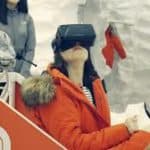
When consumers experience the positive effect of a virtual situation, they are more likely to change their attitudes and purchase behavior. The emotional connection established within the virtual experience elicits a response.
From a sales promotion perspective, VR creates the environment where consumers can sample your product through an experience. The North Face brand achieved this by having shoppers experience a dog sled race when they sported a pair of Virtual Reality goggles.
The North Face example also illustrates how a Point-of-Purchase display can incorporate VR in-store. A basic end aisle display increases sales by 20% or more, imagine the sales an impactful brand experience may drive. This holds true for trade show booths as well.
Virtual Reality marketing is powerful. It brings us together through shared experiences. Let’s use it to make the world a better, more connected and a joyful place.

